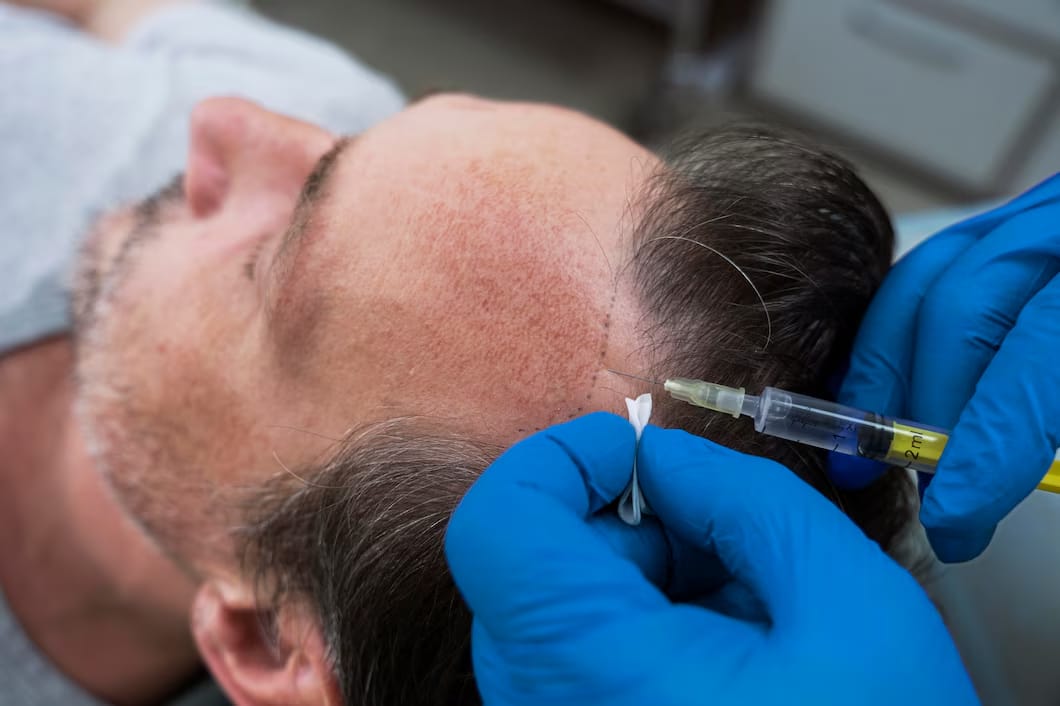
Understanding Growth Factor Therapy
Growth factor therapy is a revolutionary treatment that harnesses the body’s natural healing powers to stimulate tissue regeneration. It involves extracting a small amount of the patient’s blood, processing it to isolate platelet-rich plasma (PRP), and then re-injecting the concentrated growth factors into the desired area.
These growth factors are potent proteins that accelerate cell growth, repair damaged tissues, and promote healing.
How Growth Factor Therapy Enhances Micropigmentation
Micropigmentation, also known as permanent makeup, is a cosmetic procedure that involves implanting pigments into the skin to create the appearance of makeup. While this popular and effective technique can yield beautiful results, the healing process following a micropigmentation treatment can sometimes be unpredictable, and final results may vary. This is where growth factor therapy can make a significant difference.
Accelerated Healing
One of the primary benefits of growth factor therapy in micropigmentation is its ability to expedite the healing process. By stimulating cell proliferation and collagen production, PRP helps the skin repair itself more quickly, reducing downtime and discomfort.
Improved Pigment Retention
Growth factor therapy can enhance pigment retention, ensuring that the micro pigment colour lasts longer. This is due to the increased blood flow and nutrient delivery to the treated area, which helps to anchor the pigment in place. Additionally, growth factors stimulate collagen production, creating a more robust and supportive dermal environment for the pigment particles. This combined effect leads to improved colour vibrancy and longevity, resulting in more satisfying and long-lasting results for clients.
Enhanced Colour Vibrancy
PRP can boost the vibrancy and longevity of the micro pigment colour. By improving circulation and tissue health, the treated area receives optimal oxygen and nutrients, resulting in a more vibrant and long-lasting appearance. Additionally, PRP can help to reduce inflammation and promote healing, which can further enhance the overall results of the procedure. Moreover, the growth factors present in PRP can stimulate collagen production, leading to improved skin texture and tone, which can contribute to a more vibrant and youthful appearance.
Reduced Scarring
Micropigmentation can sometimes lead to minor scarring, especially in sensitive areas. Growth factor therapy can help minimise scarring by promoting tissue regeneration and reducing inflammation. Incorporating growth factor therapy into your post-micropigmentation care routine can significantly enhance the overall outcome, resulting in a smoother and more natural appearance. Additionally, consulting with a qualified dermatologist or aesthetic specialist can help determine the most suitable treatment plan for your specific needs and skin type.
Natural-Looking Results
By optimising the healing process and enhancing pigment retention, growth factor therapy contributes to more natural-looking and long-lasting micropigmentation results. This advanced treatment helps to minimise fading and colour distortion, ensuring a beautifully subtle and realistic appearance. Additionally, growth factor therapy can reduce inflammation and discomfort, leading to a smoother healing process and quicker recovery time. As a result, clients can enjoy enhanced confidence and satisfaction with their micropigmentation, as the treatment delivers exceptional results that seamlessly blend with their natural features. Moreover, growth factor therapy’s ability to promote tissue repair can also contribute to improved skin texture and overall appearance in the treated area.
The Micropigmentation and Growth Factor Therapy Process
Consultation

A thorough consultation is conducted to assess the patient’s skin condition, desired outcomes, and overall health. This includes a detailed medical history and a comprehensive skin analysis to identify any underlying concerns or sensitivities. The patient’s expectations are carefully discussed to ensure realistic goals and treatment plans are established.
Blood Draw
A small amount of blood is drawn from the patient’s arm.
PRP Preparation
The blood is processed in a centrifuge to separate the platelet-rich plasma from other blood components.
Micropigmentation
Micropigmentation, a cosmetic technique involving the implantation of pigments into the skin, is performed using a variety of specialised tools and techniques tailored to the desired outcome. This procedure can enhance facial features, such as eyebrows, lips, and eyeliner, or correct imperfections like scars and vitiligo.
PRP Injection

The concentrated PRP is injected into the micro pigmented area to stimulate healing and enhance results. This innovative treatment harnesses the body’s natural healing properties to improve the appearance of the treated area, promoting a more natural and long-lasting outcome.
Potential Side Effects and Risks
Growth factor therapy is generally considered safe when performed by a qualified medical professional. However, like any medical procedure, there are potential side effects, including:
- Mild swelling
- Redness
- Bruising
- Infection (rare)
It’s essential to choose a reputable clinic and experienced practitioner to minimise risks and maximise benefits.
Conclusion
Growth factor therapy, or PRP, is a promising adjunct to micropigmentation that can significantly enhance results. By accelerating healing, improving pigment retention, and promoting tissue regeneration, PRP can help patients achieve more natural-looking, long-lasting, and vibrant micropigmentation outcomes. Additionally, PRP can potentially reduce inflammation and discomfort associated with the micropigmentation procedure, leading to a more comfortable patient experience. If you’re considering growth factor therapy in Melbourne, exploring the potential benefits of growth factor therapy with your practitioner can be a wise decision.
Read more on WCCO







